Both Civic EK4 and EK9 are better reliable, tough, and more powerful models at their places. Hence, it won’t be easy for you to choose either one. You better compare them to check the differences.
So what is the difference between Civic EK4 and EK9? The main differences between the Civic EK4 and EK9 are the engines, steering, weight, and car type. The Civic EK9 is heavier, pricier, rarer, and holds a more powerful engine than Civic EK4.
In this article, we will discuss and provide the common differences between the Civic EK4 and EK9. You will be able to choose which will suit you better after you complete the article.
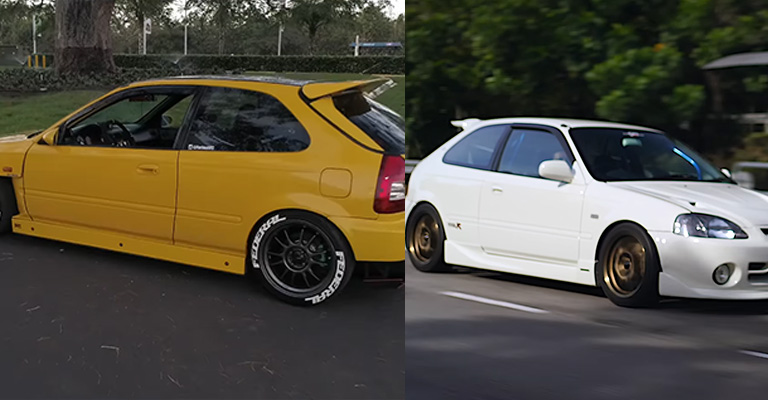
Table: Differences Between EK4 and EK9
Here’s a chart that gives you a glance at the differences between EK4 and EK9.
| Parameters | EK4 | EK9 |
| Weight | Not Heavy | Heavier than EK4 |
| Engine | B16a DOHC VTEC engine | B16b DOHC VTEC engine |
| Rear ARB | 13 mm rear ARB | 22 mm rear ARB |
| Steering | Better feeling of steering than EK9 | Not good |
| Car type | Hatch or a sedan | Only hatch |
| Price | $2,700-$6,400 | $14,000-$21,000 |
What Is The Difference Between Civic EK4 and EK9- An Analysis
Here’s an in-depth breakdown of all the differences between a Civic EK4 and an EK9.
Weight
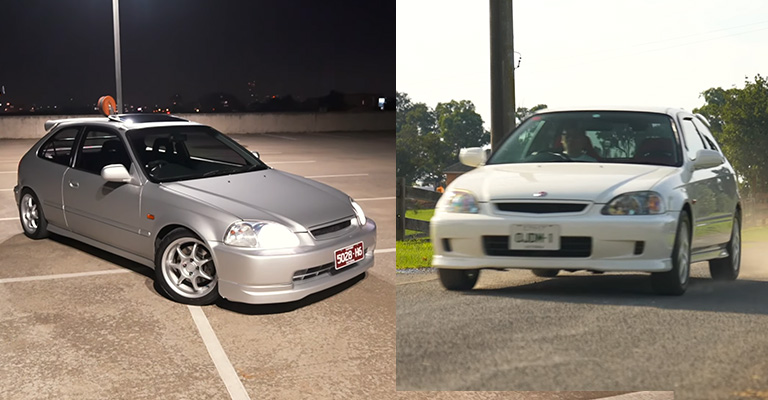
Interestingly enough, there is a massive difference in weight between the Honda Civic EK4 and Civic EK9. When it comes to braces, seam welding, etc, the EK9 has extra weight added to it. For this reason, the Civic EK9 is heavier than the civic EK4.
So the weight of civic EK4 is almost 1050 kg, whereas the weight of EK9 is nearly 1070 kg. Though the EK4 has a sunroof, that doesn’t have much effect on the weight.
However, the weight of the sunroof is 16kg only. Also, the sound deadening in the civic EK4 is weighted nearly 11kg. But still, the Civic EK4 is less heavy than the Civic EK9.
Engine
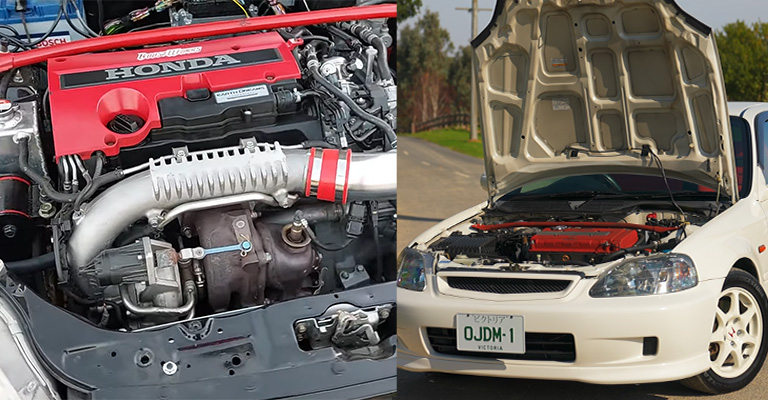
Though both EK4 and EK9 contain the B series engines manufactured by Honda, there are significant differences between them. The civic EK4 has a b16a DOHC VTEC engine, whereas the civic EK9 engine is a b16b DOHC VTEC. Here we mention below the b16a vs b16b engines specifications
| Parameters | B16a | B16b |
| Displacement | 1.6L (1,595 ccs) | 1.6L (1,595 ccs) |
| Compression ratio | 10.2:1 | 10.4:1 |
| Bore x stroke | 81 mm x 77.4 mm | 81 mm × 77.4 mm |
| Rod length | 134 mm | 142.42 mm |
| Stroke ratio | 1.745 | 1.85 |
| Power | 150 HP at 7600 RPM | 182 HP at 8200 RPM |
| Torque | 150 Nm | 160 Nm |
| Rev limit | 8200 RPM | 9000 RPM |
As above, the B16b is a more potent engine that was built from the ground up to be more aggressive. Thus, the EK9 has an LSD and is lighter than standard equipment. It is also programmed to run on fuel with a higher RON.
Moreover, the EK9 was an import-only model; thus, it will cost you far more than an EK4. The B16b is challenging and expensive to convert an engine.
However, domed pistons with higher compression, more aggressive (higher lift) cams, and a freer-flowing exhaust would be the greatest differences among these models. The inlet ports that are stationary on any B16B are manually ported to improve airflow.
Both B16A and B16B have the same exhaust ports. Intake valve seats on B16B engines are 45 degrees instead of 60 degrees from the horizontal. Having a reduced weight and a smaller valve stem, the intake valves are likewise unique.
Cylinder Head
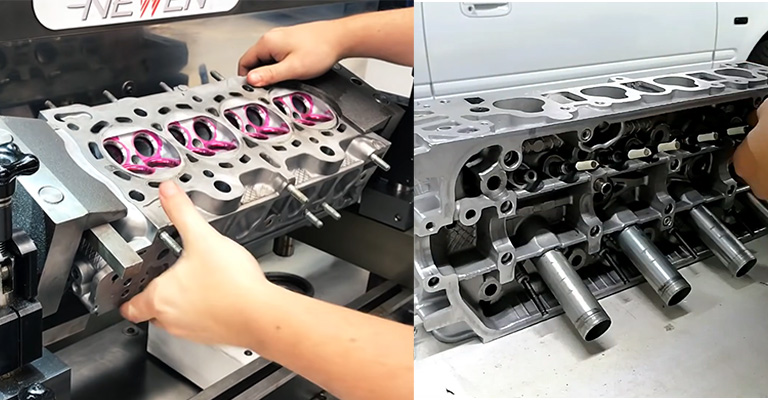
The cylinder head of the B16B undergoes hand porting or polishes, which takes a lot of time. But in the end, allows this B16B head to flow larger amounts of air compared to other B16A heads. Also, the B16B got new intake valves, spark plugs, camshafts, valve springs, and intake manifolds.
Combining these factors will enable this B16B to produce 180 horsepower out of the box without any use of a forceful induction process. You can notice by calculating that this equals roughly 112 horsepower per liter.
Cylinder blocks
The cylinder block is the primary distinction between the B16A and the B16B. B16B employs the cylinder block and architecture of the B18C from the Integra Type R, although all B16As use identical components.
Honda destroyed the engine to preserve the same 1.6L of displacement in the B16B. They did it because the B16b block has a significantly longer stroke and higher deck height than the B16A.
Thus, Honda had to adopt a different rod-to-stroke ratio on the B16B than the B16A because of the higher deck height.
Availability and Pricing

While the B16B is the superior engine of the EK9, you may have noticed that most of the Honda vehicles alongside the EK9 with B16 engines swapped with B16A. This is partially due to pricing and availability.
If you seek any local engine supplier that’s JDM, you will find that the B16a engine price is almost $2,000, whereas the B16b engine price is higher and it will cost around $3,500.
Accordingly, the B16B is far less common for engine swaps. That is because it costs so much more money for a power boost that can almost match every intense aftermarket performance item.
Rear ARB
The ARB connects the suspension components of two wheels that are attached to the same axle. As a result, whenever one wheel goes up or down, the other is compelled to do the same.
Likewise, the Bigger Anti-Roll Bar offers good handling. So the civic EK4 has a 13 mm rear ARB and the EK9 has a 22 mm rear ARB. This is because the EK9 is mainly a sports car and the 22mm ARB gives it better handling.
Steering
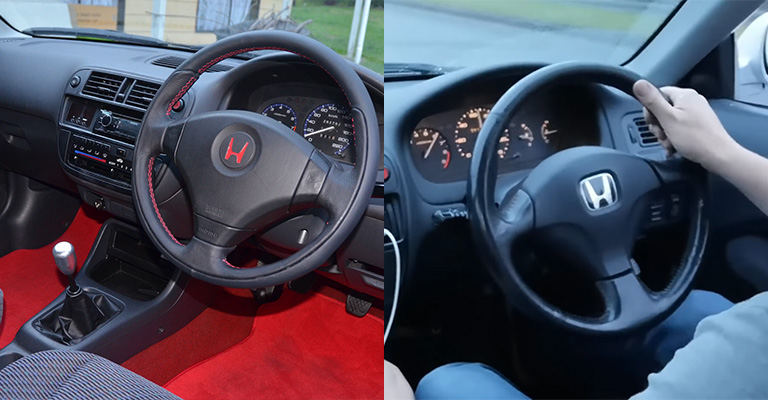
The steering system is a collection of elements that conveys the steering wheel’s motion down the steering shaft to the wheels’ left and right movements. That works even if the wheels of a car don’t turn at the same angle.
When the steering wheel rotates, the car responds to it. If you have better control of the steering system, you will have better control of the movement of the car while driving. Comparing both the EK4 and EK9 steering, it’s found that the feeling of EK4 steering is better than the civic EK9.
Cost
The Honda Civic EK9 is more expensive than the Civic EK4. Thus, the cost of the EK4 ranges between $2,700 to $6,400, whereas the Civic EK9 will cost you $14,000-$21,000.
Besides, the maintenance cost is also higher in EK9 than the EK4. This is because of the availability of the engine. Similarly, the parts of the engine of the EK4 are more available than the EK9.
FAQs
In this section, we will answer some frequently asked questions.
Yes, the EK4 has a VTEC head on the engine. Although the VTEC variable valve timing system was first introduced in the Honda Integra in 1989, the Honda Civic EK4 was the first opportunity to experience the VTEC.
Yes, the Honda EK9 is slightly rare because of the production numbers. The EK9 model was only ever built in 16,241 pieces, making it difficult for gearheads to locate one in decent condition.
The Honda EK9 is good because of the performance of its engine. Only 6.7 seconds is needed for the EK9 model to Accelerate from 0 to 60 mph. Thus, it manages to finish a quarter mile in only 15.3 seconds.
Conclusion
Although there are many significant differences between the EK4 and EK9, both are famous and better choices for you. The Civic EK9 is a Type R hatchback that is slightly rare these days because this car was produced in a limited number of pieces.
Throughout the article, we discussed and answered What is the difference between Civic EK4 and EK9. There are some disadvantages of the EK4 engine compared to the EK9, but both engines are some of the bests of Honda.

Leave a Reply